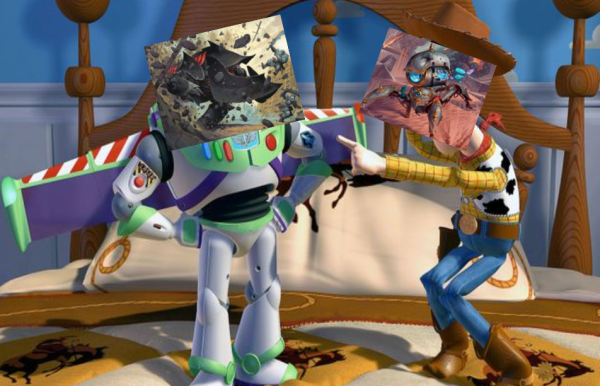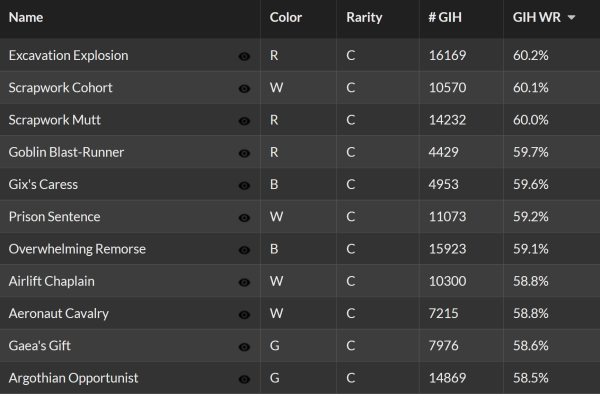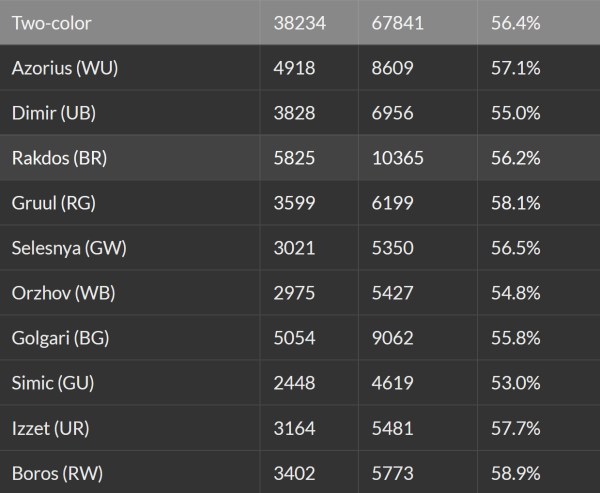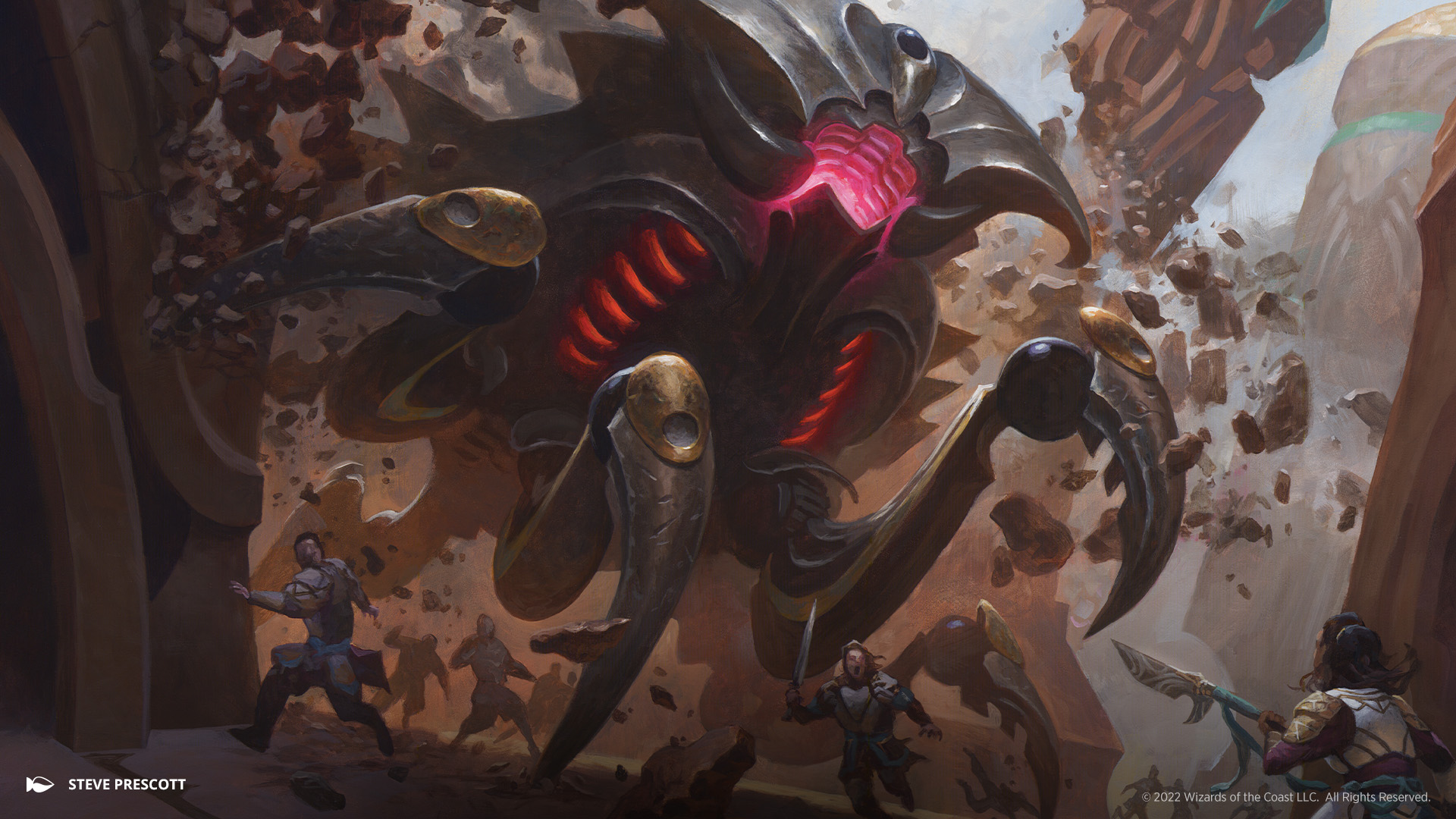Are you a Quiet Speculation member?
If not, now is a perfect time to join up! Our powerful tools, breaking-news analysis, and exclusive Discord channel will make sure you stay up to date and ahead of the curve.
Some have said that the graveyard, in modern Magic, is just an extension of the hand. While I would hardly call this a graveyard set, the Brothers' War (BRO) takes advantage of this truism.
Undead Allstars
Whether we want to be aggressive or play a more attrition-based gameplan, these cards help us accomplish our goal. Each is powerful individually and on its own merits. This format, however, appears to be curated to maximize their effectiveness.
Actual Artifactual
Artifacts have a reputation for doing broken things. Black Lotus? Artifact. The Moxen? Artifact. Affinity hasn't been a problem unless it's affinity for artifacts. They even made a cycle of monochromatic lands, coded them with the artifact subtype, and subsequently had to ban them from multiple formats. Artifacts have a reputation for doing broken things.
This format introduced the powerstone token. In our preview guide, we projected casting our prototype cards at full cost to be the best use of this newly ubiquitous resource. We may have overlooked the power of this returning mechanic because of the shiny newcomer.

Powestones can both cast and reuse unearth cards, contributing to fast starts and mana-efficient plays. Additionally, artifacts have tons of value in the format, both when entering the field or as fodder once they've outlived their usefulness.
Just a few payoffs
Benefiting the Macro and the Micro
If we want to ramp with powerstones, the unearth cards provide flexible ways to use our mana. In a more aggressive deck, our attacks are bolstered with unearth threats. Because the creatures come back at sorcery speed before being exiled, they make for natural attackers. Additionally, nearly all of them provide value to support more attrition-based approaches. They provide card advantage, card selection, life, or tokens.
The lone exception is Mishra's Juggernaut. That thing is a bowling ball of butcher knives, to borrow an old description from the NFL. Maybe we can bring down the juggernaut, but it's going to cost us. The price is often an unfortunate combination of life and creatures. While it doesn't bring value in a traditional sense, it creates difficult situations for opponents.

The more specific archetypes for BRO synergize even further. The UB deck wants to draw two cards a turn. The downside is that this often costs us tempo. However, Scrapwork Rager, Combat Courier, and Scrapwork Mutt all allow us to trigger this condition twice while adding board presence.
The GW deck wants artifacts to enter the battlefield, usually while remaining aggressive. Scrapwork Cohort and the uncommon Mask of the Jadecrafter provide four triggers each. While the RW deck is a little less defined, these support the generally aggressive game plan with creatures entering the battlefield and doing so hastily the second time around.
The only archetype that doesn't explicitly benefit from the unearth cards is the UR Spells deck, however, Combat Courier and Scrapwork Mutt still represent excellent options for the deck in the early game. As a result, these cards are excellent early picks as we await the draft to point us in a more specific direction.
Early Look at the Data
The early data reveals a strong performance from these cards, with cohort and mutt appearing amongst the top three commons.

The performance of these commons mirrors the performance of the color pairs in this format. The two unearth creatures propel RW to the format's best results, with RG following it by nearly an entire percentage point, and UR spells in third. In the format's early days, red appears to be a great place to start.

The woeful data for GU leads us to believe that, while generating powerstones has value, we need to use them efficiently. This is the biggest indictment against the prototype strategies. Whereas other combinations have access to multiple common unearthers, GU only has Combat Courier. The little construct is blue's top common by a large margin, but they can't do it alone!

Looking Ahead
It makes sense that the unearth creatures are thriving. When compared with the prototype threats they offer more flexibility. When we spend seven mana on a single creature, we are vulnerable to interaction. If that mana is spread over two turns generating resources each time, we give ourselves more options. In my experience, this format has not felt as flat as Dominaria United. This is a format with good cards and worse cards. In DMU the cards were fairly close, and synergy separated them. The unearth cards provide additional uses for our mana, helping us minimize our reliance on those lesser cards.
Though this format is still finding its form, data at this stage tends to be reliable. While cards will move, we shouldn't expect huge swings.
Shine a Little Light
To close out this article, let's shine a little light on Boulderbranch Golem. This article has not been kind to the prototype creatures. However, this one has been pretty strong.
Boulderbranch has a lot of the strengths of the unearth cards. It immediately provides life. It is a flexible spell and is fine at both points on the curve. In our preview guide, I suspected the massive Rust Goliath would be the premium prototype common. The massive body and keywords embodied my expectations of the set. Perhaps it was my affinity for a certain Warner Brothers film.
With ten mana being unrealistic, and the demand for immediate value from our creatures, Boulderbranch has been the common prototype creature that's performed best. It's the third-best green common and it fits well on the curve.

While the Goliath can be a defensive stopper on five, it simply doesn't do enough. Boulderbrach Golem is the giant robot you want in your deck. The upside is not as powerful, but you can't put a price on the reliability.





